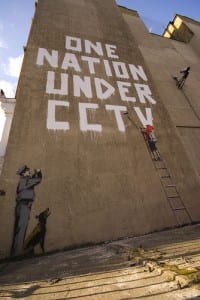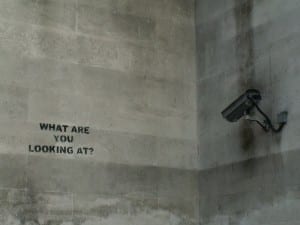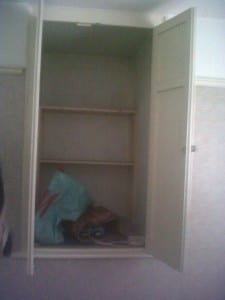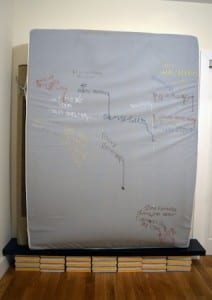It is proposed that the ‘eavesdropper, perhaps, would be the auditory equivalent of the voyeur’ ((Fitzgerald in Iddon, Martin (2010) “Plato’s Chamber of Secrets On Eavesdropping and Truth(s)”, Performance Research, Vol 15, Issue 3 p. 6-10)). The voyeur seems to be a common theme emerging through our performance so it would be nice to extend that theme to listening. Making it clear to the audience that they are not only being watched but also heard in specific rooms could be interesting. They would act differently in those rooms to how they would when they think there is no surveillance e.g. the bathroom and toilet.
The act of ‘listening in’ implies that there is something to overhear. So, ‘to be, listening, is to be aware that there is a secret:’ ((Iddon, Martin (2010) “Plato’s Chamber of Secrets On Eavesdropping and Truth(s)”, Performance Research, Vol 15, Issue 3 p. 6-10)). This implies a breach of privacy, which is something we would have to take into consideration with our performance. The audience would probably have to be made slightly mindful that the CCTV is in operation. This doesn’t have to be a hindrance to performance, however. We could make them slightly knowledgeable without overdoing it, in the hope that they forget about the cameras during the performance. Or, we can make them too aware and monitor their reactions. A couple of ways to do this could be put a poster of Banksy’s iconic image in the waiting area for them to subconsciously notice.
http://www.adambowie.com/weblog/archive/2008_04.html (accessed 23/02/13)
Another possibility is to highlight the CCTV camera in every room. This could be done with signs or lights. It could be as obvious as arrows pointing towards the camera or just subtle signs.
http://snippits-and-slappits.blogspot.co.uk/2011/10/top-11-ways-big-brother-or-sister-loves.html (accessed 23/02/13)
This idea could spark many reactions depending on the audience member, which will mean every performance is radically different. We won’t know until the performance happens.



